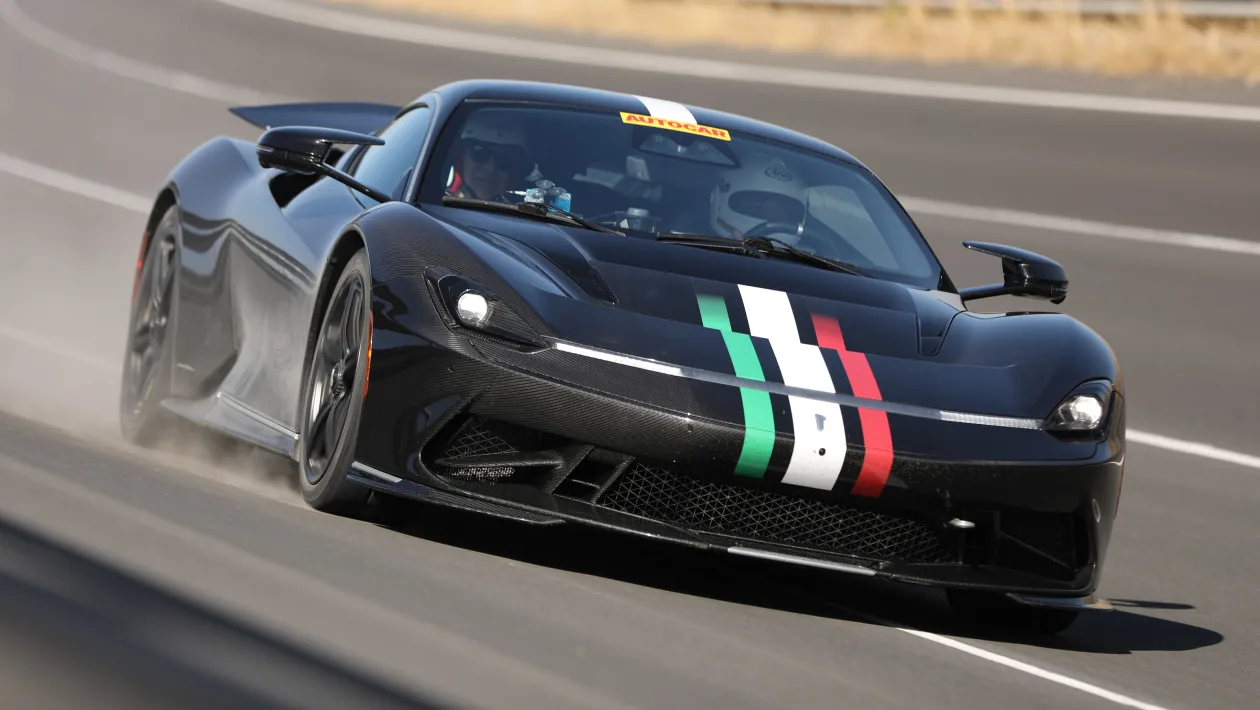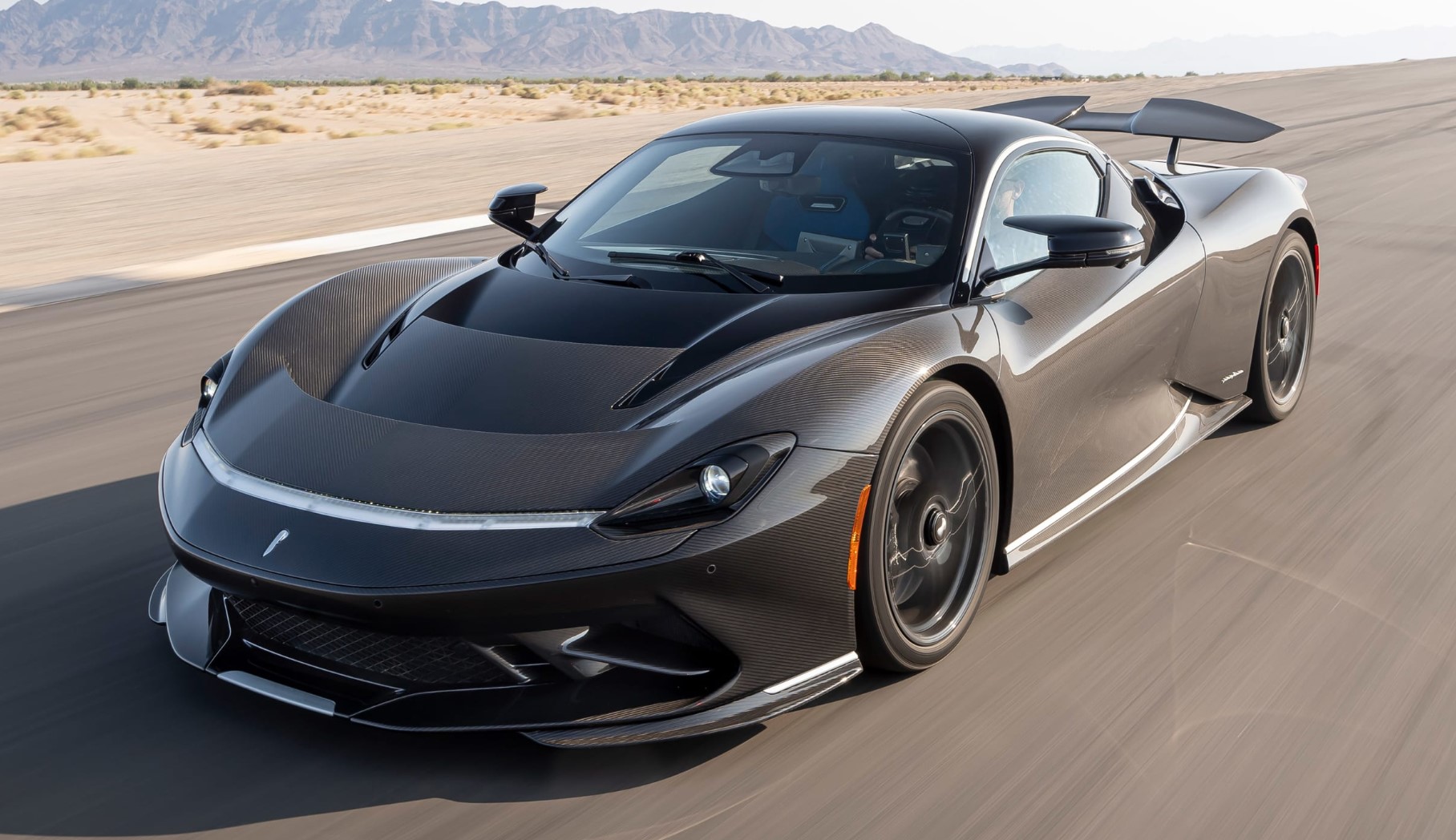Automobili Pininfarina has put its all-electric Battista hypercar through its paces on the quarter mile, breaking a record in the process.
As part of the Pininfarina Battista‘s debut in India, the intense all-electric hypercar made a visit to the the Natrax Indore testing facility, breaking key international acceleration records with its immense all-electric performance.
Based on the same underpinnings as the Rimac Nevera, it should come as no surprise that the Battista achieved near-identical acceleration times. During the tests, Pininfarina covered the 1/4-mile in just 8.55sec, beating the 8.58sec of the Nevera by a fraction to become the world’s fastest accelerating production car.
The Battista will be limited to just 150 units priced at around $3.5 million, and is based on a carbonfibre chassis commissioned from Croatian electric hypercar manufacturer Rimac. The 120kWh battery pack, electric motors and capacitors are also sourced borrowed, yet while much of its tech is shared, there’s been much work to ensure that its vision of the Battista remained pure. As a result, Pininfarina did significant work on the Battista’s overall proportions, moving the windscreen forward by 180mm, giving it a more traditional Italian mid-engined supercar silhouette.
Two electric motors are mounted to each axle, each powering a specific wheel and giving the Battista full torque vectoring capability without the need for heavy and complex differentials. Total power is rated at 1378kW, with a staggering 2301Nm of torque available at a standstill, enabling the Battista to hit 100km/h in 1.86sec and 200km/h in just 4.75 – a 100km/h to standstill distance of 31m is also a record for a production electric car. Pininfarina quotes an estimated 349km/h top speed (though it achieved 357km/h in recent tests), some way from the 415km/h of Rimac’s Nevera.
The battery pack itself is not of the increasingly popular skateboard variety, rather it’s a T-shaped unit that sits behind the driver compartment and runs between the two seats. The main benefit is being able to maintain an ultra-low driving position, as well as keeping more of the mass towards the centre of the car. The 120kWh battery pack should enable a potential range of up to 450km from a single charge.
If there is a single element that plays to Pininfarina’s strengths, it is of course the design, and the Battista does not disappoint in this regard. The traditional mid-engined silhouette is present and correct, and is wrapped with a considered, subtle and sophisticated body that is dripping with appeal. The most dynamic and interesting element is the massive delta-wing motif, that runs over the tight rear haunches and informs the rear styling and floating wings that also house the tail lights. This section also holds the Battista’s active rear wing, which is the only piece of active aero on the car.
The interior is dominated by a pair of touchscreens flanking the steering wheel, with designers focusing on a level of symmetry from the driver’s perspective, rather than the interior as a whole. Specific trims and finishes are able to be specified to the owner’s taste, and as suspected, this is a strictly two-seater interior.
Behind the Battista’s development were some big names, with former Formula 1 driver Nick Heidfeld having put the model through its paces as a development driver, and Mercedes-AMG alumni Rene Wollmann handling the schedule.
When it comes to cost, Automobili Pininfarina is quoting a price for the Battista of around $3.5m. This price point puts it above potential rivals like the Lotus Evija and Rimac, and straight into the territory of the Bugatti Chiron; a car which not only appeals on design and performance, but heritage.
A special edition Battista Anniversario edition will make up five of the expected 150 unit build run and differs from standard versions by a selection of subtle aesthetic changes – the underlying technical base remaining unchanged.






